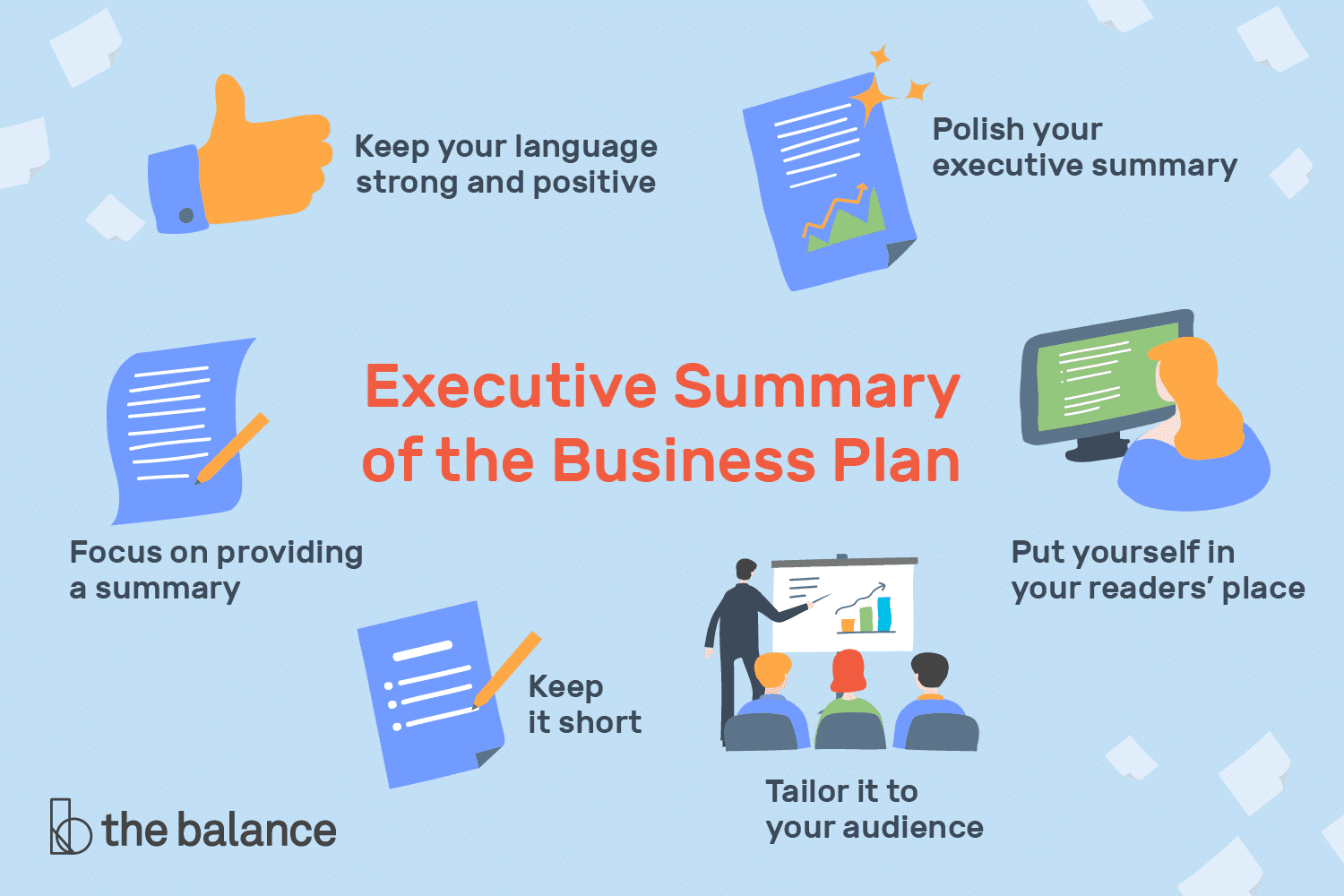The executive summary of a business plan is a complete overview of the business. It serves the purpose of summarizing points that are keyed into the main objective of the document. It assists the readers, saving them time and trying to prepare them for the main content ahead, which means this has to be done rightly. And just to make sure of that this post has been designed guide you through the vital points of an executive summary with an actual example from Diezel Taxi Services.
So sit tight and enjoy the ride. But if you’re anything like me, order in some pizza too.

What is an Executive Summary?
An executive summary is a quick introduction and summary of the entire business plan. So basically, it should include information about your company, the problem it answers, your target market, and key financial figures.
An effective executive summary captures the attention of your reader and informs them of what you do and why they should read the rest of your business plan or proposal. It’s not uncommon for investors to make a judgment based just on the executive summary, therefore it’s critical to get it properly. We’ll show you how to create an executive summary that distinguishes your business plan from the competition.
Is an Executive Summary Necessary?
If you are you putting together a business plan to present to potential investors or bankers, then definitely you’d need an executive summary. Regardless of the content, many individuals simply go over the synopsis only. Others decide whether or not to read the whole of the plan after reading the overview. In other words, when writing a plan for the reading pleasure of a third party, the executive summary is pretty much the most important aspect.
You may not need an executive summary if you’re preparing a business strategy for internal use only. Some internal plans, such as an annual operations plan or a strategy plan, can benefit from a summary to emphasize important facts and present a digestible version of the entire plan.
It takes time and effort to write a solid summary, so do not do it unless you have a business need for it.
Key Takeaways
- — Keep in mind that the executive summary is an advance organiser for the readers before the main content. So, in its entirety, it must be concise, straight to the point, and doesn’t have a miss and off point. It should serve the purpose of enticing the readers to key in and read the rest of the business plan. It is why the executive summary is at times, called the most important part of the business plan before the main business plan is executed. When it doesn’t capture the minds of readers, the plan will be set aside, unread. That, already is a huge failure if it was written to get funds to start up your business.
- — However, getting a fund for a startup, isn’t the only reason for business plans. There are several other reasons, as important as getting funds to help kickstart a business. This includes; scaling the business to the next level, putting plans in place for the future and so on. The idea that had always been nurtured.
Since it represents an overview of the plan, it is quite common to write a business plan after you had executed the whole write-up. There are many things to think about when you are trying to develop, many of the ideas.
Read Also: How to Write a Business Plan [with Sample Pdf]
What is the Ideal Length for an Executive Summary?
Executive summaries should be as brief as possible, according to the usual norm. Your audience is pressed for time and attention, and they want to learn as much as possible about your business’s plan.
If at all feasible, keep your executive summary within two pages, however it can be longer if required.
What Information Should You be Putting in an Executive Summary?
The information varies, ranging from different angles and in most cases, depends on the nature of your business; startup or an established business.
If your business is a startup, the main goals will lean on how to convince banks, organisations, investors, or venture capitalists to invest fully in your business by helping to provide startup capital in the form of equity financing or any type of financing at their disposal. To achieve this, your business plan, will have to deal with a genuinely strong points that will make it stand out.
In any case, a typical example of a business plan executive summary for a startup or existing business should include the following sections.
Read More: Business Start Up from Scratch for Beginners (+ How-to-Start Guide)
#1. The Business Opportunity:
This is a description of your product or service, as well as the problem that your company addresses. It is a concise description of the product or service you’re selling, as well as why it’s important. Your company doesn’t have to solve a bigger social issue, but it should meet a customer need or a market opportunity.
So in general this covers an apt description of the products and services offered. Plus how they will appeal to the targeted audience and sail above those available in the market.
#2. A Description of your Intended Audience:
Your target market basically are people you believe will be your clients. The market is sometimes defined by the product name alone, such as “Peoria’s Best Thai Food” or “Mini Cooper Dashboard Accessory.” If not, a quick explanation of your target market—your major audience or the people you believe would be willing to pay for your solution—can suffice.
Read More: FUTURE BUSINESS IDEAS 2021-2030 (13+ lucrative Ideas)
#3. The Competition:
Assuming that your firm will face competition (which it will! ), briefly discuss how your company will set itself apart. Are you in a pricing war, a quality war, or something else entirely? Here’s a quick summary of what makes your company unique.
Also, write about how you are going to scale the hurdles. This includes the exact strategy you intend employing to get the market shares. What is your advantage over your competition? What exactly will you offer your customers different from what had been in the market? How will you scale through it!
#4. Financial Analysis:
If you already have a business, this might be as simple as showcasing current annual sales and growth in the previous year. On the other hand, it could be a quick summary of ambitions for a startup, such as a sales prediction aim for the following year or three years. Basically, a simple highlights chart, a bar chart displaying sales and gross margin over the next three years, is something I frequently recommend.
#5. Your Team:
This is especially crucial for new businesses. Investors want to know who is behind the company’s concept and why you and your team are the best individuals to run it. In simple terms, a detailed description of the ownership and the members involved in the business and the expertise they bring to table.
It’s also a good idea to point out any gaps in your team and how you plan to fill them. If you have any potential partners or candidates in mind, list them briefly in your comprehensive business plan and expound on their qualities.
#6. Financial Requirements:
If you’re utilizing your business plan to raise funds, your executive summary should make it clear how much money you’re looking for. Investors will want to know this right away, rather than having to sift through a business plan to locate it.
#7. Plan for Implementation:
Make an outline of how you intend moving the business from the stage of the planning to the launch if it’s still an idea.
For businesses that have been established, an example of a business plan executive summary includes the available information on achievements, growth plans, etc.
#8. Sales and Marketing Strategy:
Talk about your plans and exact strategy to put your products in the faces of prospects. How you intend to convert them from prospects to regular customers and then organic advertisers of the business. How it would triumph amongst others.
Read More: Download 500+ business plans for any business
Other Issues that your Executive Summary Might Need to Address
The following are other pieces of information that should be contained in an executive summary.
Early Evidence of Success
If you’re a new startup, you’ll want to incorporate evidence of “traction” in your executive summary; especially if you’re preparing a business plan to raise funds. For the most part, examples include; consumer survey results, pre-order figures for your product/service, or even early sales numbers if you conducted a soft open or limited time release.
It doesn’t have to be much, but any early success demonstrates the validity of your business concept, product/service, and market research.
Milestones to Come
You might also want to talk about what your company expects to accomplish in the future. This is especially critical for enterprises in highly saturated or sophisticated industries, such as medical device and pharmaceutical companies. They must describe where they are in the regulatory approval process and what steps are left.
Financial Stability Evidence
Bankers will search for evidence of your financial stability, such as your net worth, assets, and financial history, if you apply for a bank loan.
Read More: Download 500+ business plans for any business
Examples of a Business Plan Executive Summary: How Do I Write It?
Begin by penning down a few sentences concerning each topic mentioned above. This is irrespective of the nature of your business; whether it’s a startup or not.
One of the easiest ways to write an executive business summary is to review your business plan, sieve out the important stuff and bring them together.
After which you need to craft a ravishing closing sentence that answers the most important question, “Why is this a winning business plan that will capture the readers, regardless of other business plans presented?”
For example, an executive summary for a poultry farm business plan might end with: “The poultry farm that will help curb the lack of poultry products in the country, in turn serving need of individuals in Ohio.” Not necessarily this though but something close.
Read More: Family Business Succession Planning: Creation, Template, Model, and Sustainability
General Tips to Execute Business Plans Executive Summary:
There are several fundamental rules of thumb that will make writing your executive summary easier and more effective, regardless of why you’re creating it. Here are a few things to keep in mind as you begin:
Consider an executive summary to be a sales pitch
Consider a summary to be similar to an elevator pitch, but with more restrictions. A strong executive summary sells the rest of the business plan, but it can’t just be a hard sell—it needs to explain the whole thing. At the absolute least, readers expect it to contain your company’s, product, market, and financial highlights.
Of course, you’ll have to emphasize more on what will pique the reader’s interest in order to meet the plan’s immediate commercial goal. Your readers, on the other hand, want you to cover the most important points. It’s more of a summary than a pitch though.
Do it Last
Don’t start your plan with the executive summary. Despite the fact that the executive summary comes first in a completed business plan, several experienced entrepreneurs recommend writing it after they’ve written everything else.
The executive summary should be short—a page or two at most, five on the outside—while highlighting the points you’ve made elsewhere in your business plan.
Keep it to a Bare Minimum
Keep it short and sweet. Experts suggest a single page, a page or two, no more than five pages, and occasionally even more. I personally believe that the more in that context is little.
Keep it as short as possible without omitting anything important. And, because I write hundreds of plans each year, I can’t help myself: one page is better than two, two is better than five, and more than five pages (in my opinion) is too long.
Maintain a Straightforward Approach
Don’t overcomplicate or over-explain things in your summary. The majority of executive summaries are brief paragraphs with bullets and subheadings. Illustrations such as a product picture or a bar chart with financial highlights are frequently nice additions.
Determine which portions should be prioritized based on their importance and strengths
Make sure the most important information is at the top of your executive summary. There is no predetermined sequence in which the many main items featured appear; on the contrary, the order should be used to demonstrate importance.
Start with the item you want to receive the most attention for, and work your way down the list in order of priority. I prefer summaries that begin with a problem because it adds drama and urgency, which sets the stage for the solution in your company.
Read More: Free Examples of a Business Plan
Tailor it to your audience:
If the main purpose is to wow your investors, for example, the business executive summary should lean toward the opportunity your business brings to investors and why the opportunity is gold.
On the other hand, if the purpose of your plan is to acquire a business loan, the main focus should be on highlighting what the traditional lenders want to see, such as the experience of the management and the absolute fact that you have the collateral and strategies in place, to minimize the risk of the lender. This will may also include a peek at your financials to show you are credit-worthy
Read More: Download 500+ business plans for any business
Place yourself on the minds of the reader:
When you are done, read it again. Does it have the tingling interest or wowing factors on the reader? If there is none, ask why? Bear in mind that the executive summary is the first thing your audience read. If it’s poorly crafted, then most likely you may lose the opportunity you’re trying to bag.
Here is an extract from Diezel Taxi Services..
Example of a Business Plan Executive Summary FAQs
What is included in an executive summary?
In any case, a typical example of a business plan executive summary for a startup or existing business should include the following sections.
- The Business Opportunity
- Financial Analysis
- A Description of the Intended…
How long is an executive summary?
Keep it short and sweet. Experts suggest a single page, a page or two, no more than five pages, and occasionally even more. I personally believe that the more in that context is little. Keep it as short as possible without omitting anything important. And, because I write hundreds of plans each year, I can’t help myself: one page is better than two, two is better than five, and more than five pages (in my opinion) is too long.
What is an executive summary template?
An executive summary is a quick introduction and summary of the entire business plan. So basically, it should include information about your company, the problem it answers, your target market, and key financial figures.
Why is executive summary important in a business plan?
The executive summary of a business plan is a complete overview of the business. It serves the purpose of summarizing points that are keyed into the main objective of the document. It assists the readers, saving them time and trying to prepare them for the main content ahead, which means this has to be done rightly.






